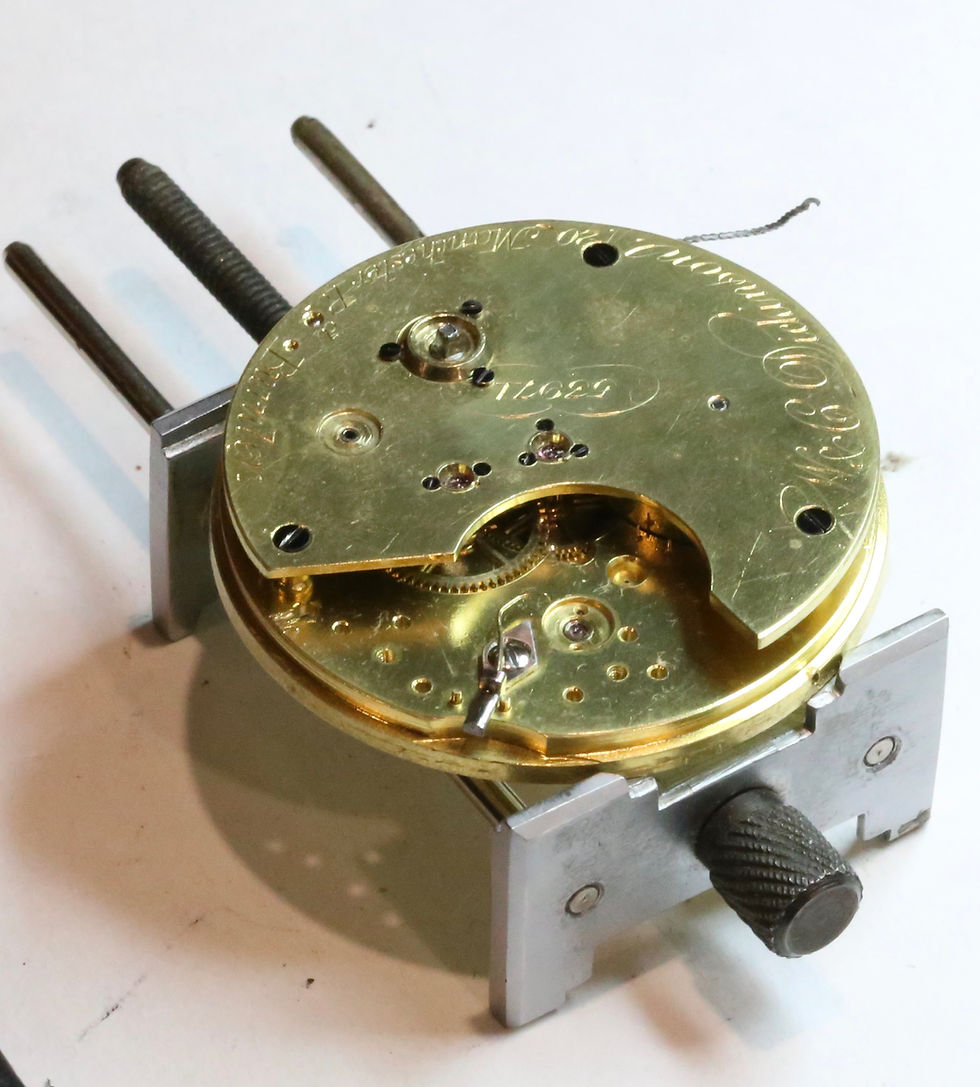
,
Have you ever wondered how an English watchmaker could have made so many watches (based on serial numbers), or why so many movements look almost identical?. In this blog, I will try to answer these questions.
To manufacture a watch movement, a number of different trades/skills were required, all differing and all needing expertise in the given field. Large machinery was required to produce some parts and this required power, either man powered, water driven, or later steam and then electric.
A modest to medium sized watchmaking business wouldn't have the necessary man power to give such a diversity of skills or premises large enough to house machinery and raw materials, so they bought in parts from factories that had the machinery, skills and raw materials on hand. Each manufacturer would specialise in a particular area and may be at different ends of the country.
Can you imagine, with no internet or telephones, the difficulty in managing a dozen suppliers by post or having to make long and slow regular trips?
The parts that they bought in, would have been in the rawest of states barley resembling a finished watch.
In the mid 19th century manufacturers began to merge their factories and skills, emulating the Swiss ebauche (french for blank) makers. Some of the large English watchmakers brought everything in house, for example J.W. Benson and the Lancashire Watch Company who even made their own cases.
This is the only way the English watchmaking industry (who had been more focused on the art and science of timekeeping), could attempt to keep up with the emerging mass producing American watchmakers and Switzerland who had been perfecting mass production of the ebauche since the 17thc.
The watchmaker could now buy in an almost finished watch, with most of the parts he needed, making it logistically much simpler and less time consuming than purchasing from a multitude of manufacturers.
What was in the kit?

1. Dust cover. 9. 3rd wheel.
2. Bottom plate. 10. 4th wheel.
3. Top plate. 11. Escape wheel staff/pinion.
4. Spring barrel bridge. 12. Spring set up components.
5. 3rd wheel bridge. 13. Fusee power maintaining and stop works parts.
6. Spring barrel 14. Balance cock with regulator and jeweling.
7. Fusee.. 15. Screws.
8. Centre wheel. 16. Dial
What did the watchmaker have left to do?
1. The dust cover would need gilding and the retaining steel spring blued.
2. The bottom plate would be gilded then would have the pivot holes opened to size or jewelled, winding arbour and spring barrel arbour holes opened to the watchmakers specification, balusters drilled to take fixing pins.
3. The top plate like the bottom plate would be gilded, its pivot holes would be sized or jewelled, increments on the regulator and fast/slow indicators would be engraved, the watchmaker may choose to engrave his name also.
4. The spring barrel bridge was gilded and may have some engraving, the spring barrel arbour hole opened as required.
5. The 3rd wheel bridge was gilded and pivot holes opened as required or jewelled.
6. The spring barrel arbour was turned to the required size corresponding with the bridge and bottom plate. The barrel was gilded.
7. The fusee complete with clicks ratchet power maintaining spring and wheel was grooved with a spiral for a chosen chain size. Arbor was turned to the required size for top and bottom plates.
8. The centre wheel staff turned to the correct length with pivots and required end shake.
9. As with number 8.
10. As with number 8.
11. The watchmaker would take from his preferred escarpment stock an escape wheel, matched to a lever and turn the staff to the required length.
12. the spring setup ratchet and click would be blued.
13. The fusee stop and spring blued.
14. The balance cock would be engraved if required and gilded.
15. Screws were polished and blued.
16. The dial feet drilled to take fixing pins.
As with the escapement the maker would chose his preferred balance, balance spring and main spring all calibrated to work in harmony.
A finished movement from a similar ebauche.

Written by David Panunzio @romandial.com
February 2018





















